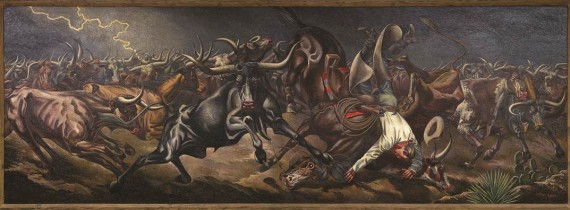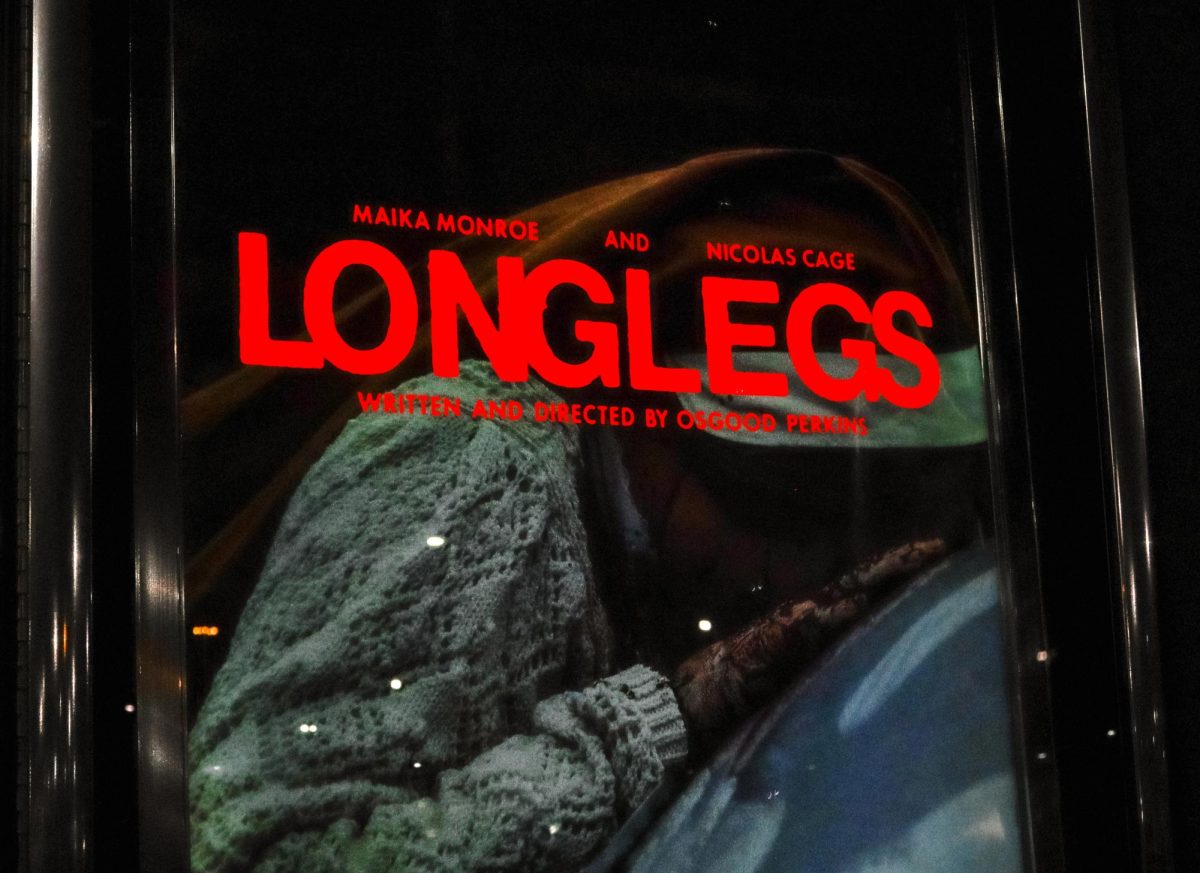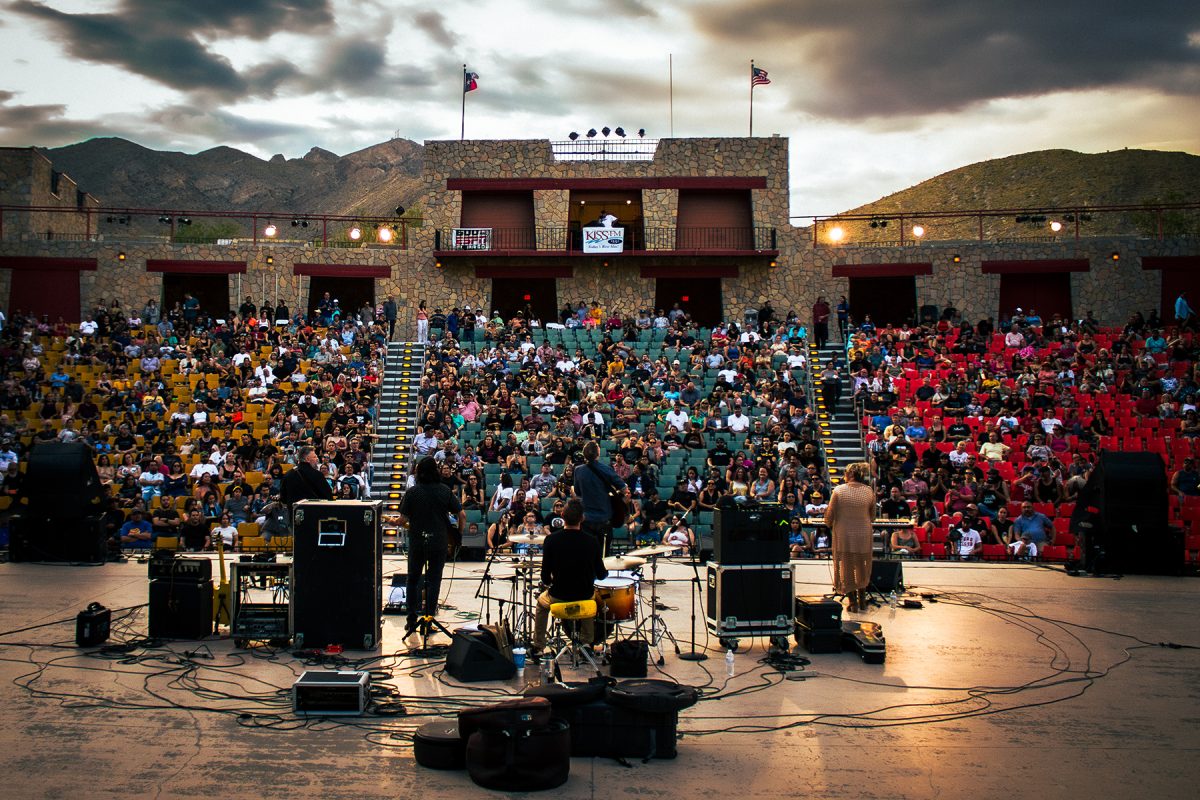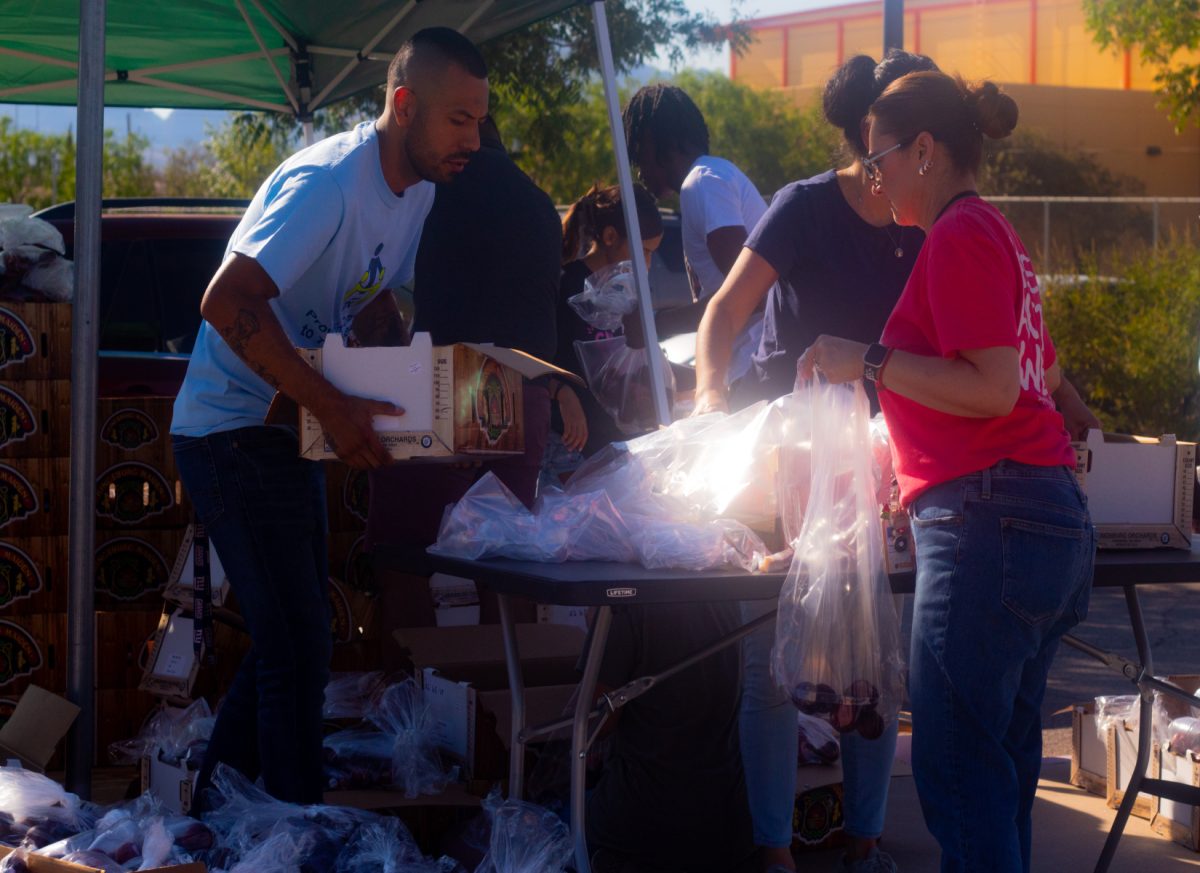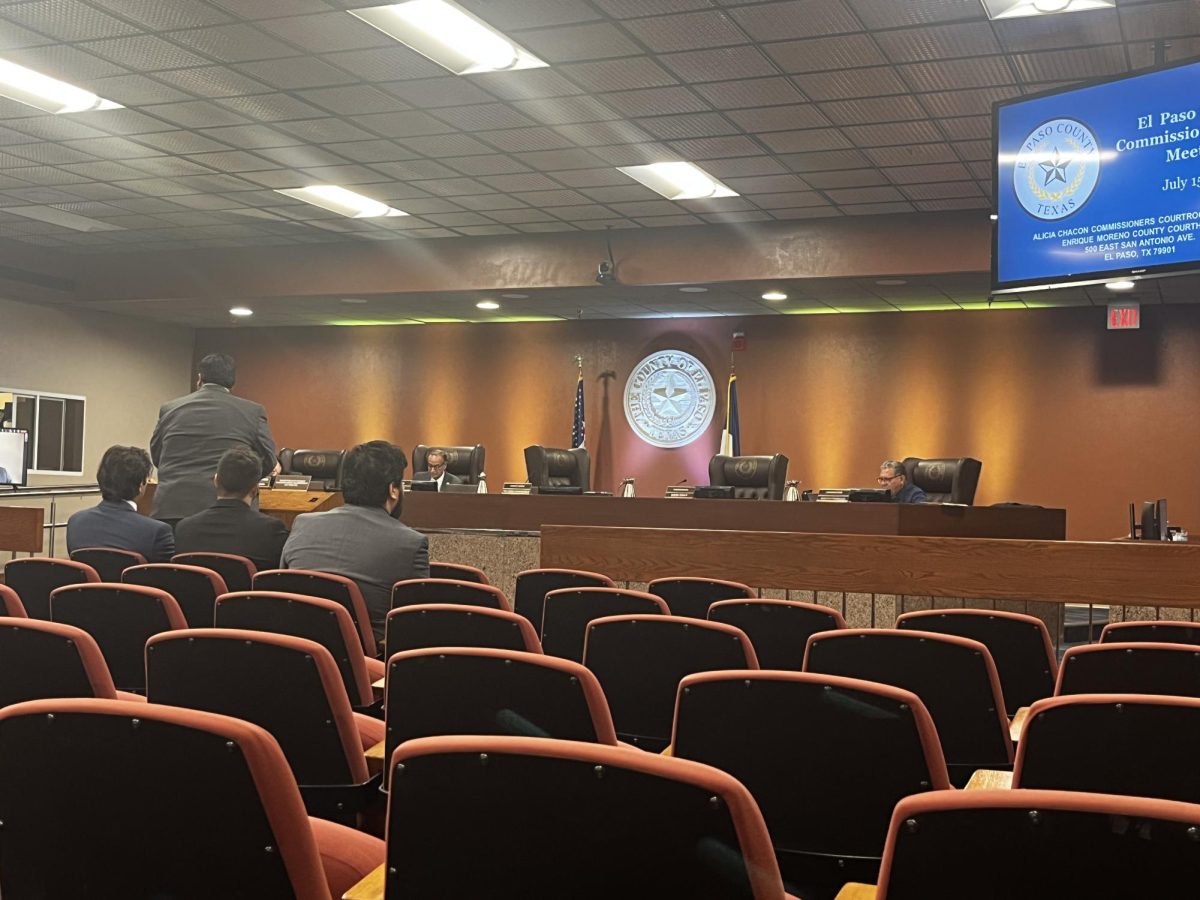WASHINGTON – Damage to one New Deal mural sparked a national conference Wednesday to address the importance of preserving art throughout the country.
The glowing red eyes of a black Texas longhorn stand out from the chaotic scene of a raging herd as the longhorn knocks a cowboy from his horse. A lightning bolt flashes across the ominous sky, fueling the herd’s stampede.
This 16 foot by 5 foot mural is called “Stampede” and was painted by Tom Lea, an American artist from El Paso, Texas. Lea placed the mural at a U.S. post office in Odessa, Texas, in 1940. George Jacob, former executive director at the Ellen Noel Art Museum of the Permian Basin, saw the mural in 2013 – it had been sprayed with Coca-Cola and some of the paint was peeling.
The conference at the Smithsonian’s Museum of American Art was to acknowledge Lea’s work and to bring together a community to better protect murals like Lea’s across the country for the nation’s heritage and international understanding.
“No other artist has carefully and effectively captured the essence of the southwest border region,” Sen. John Cornyn, R-Texas, said. “These works produced during the New Deal are true gems of American history that deserve our attention and respect. Perhaps, in times when we are feeling like things aren’t working in the way that we wish, it’s good to remember and be invigorated by the spirit of somebody like Tom Lea.”
Lea was born July 11, 1907, in El Paso. Most of his paintings captured the border between El Paso and Ciudad Juarez, Mexico. He also worked for Life magazine as an eye-witness artist correspondent during World War II, where he painted one of his famous pieces in Peleliu called “Two-Thousand-Yard Stare.” He wrote and illustrated two novels, “The Brave Bulls” and “The Wonderful Country.” Both were adapted into movies. He traveled the world during the 1930s, seeing the works of many artists, including Piero della Francesca in Italy and Eugene Delacroix in Paris, but he always returned to El Paso. He died there Jan. 29, 2001.
In 1934, Franklin Roosevelt’s administration created the Public Works of Art Project to support the arts nationally. Artists could participate in this program to paint an “American scene.” The program paid the artists, many of whom struggled financially during the Great Depression, and gave them a sense of pride in serving their country. Lea’s “Stampede” was a part of this project.
“There is a huge sense that people were looking, not to the moment, but what had made the country great, that we could reconstruct and recreate a more solid society in the 1930s,” said Jennifer Gibson, director of the U.S. General Service Administration’s Art in Architecture and Fine Arts program.
Sabiha Al Khemir, an Islamic scholar and senior adviser for Islamic art at the Dallas Museum of Art, found out about Lea when she traveled to Paris for an Islamic art show. She stopped by her friend’s house to feed the cat and saw a reproduction of Lea’s painting, “Southwest.” She instantly fell in love. She said she strongly believes that better treatment of murals is needed.
“His painting spoke to someone on the other side of the world. ‘Southwest’ is the window of his homeland and a window to a home for the soul,” Al Khemir said. “I come from a totally different tradition, a different culture, and Tom Lea’s ‘Southwest’ invites me to step outside my own landscape and imagine a different one. Tom Lea is an artist of El Paso, an artist of America, an artist of the world. His spirit deserves to be worldly celebrated.”
Reach reporter Lorain Watters at [email protected] or 202-408-1494. Like the Scripps Howard Foundation Wire interns on Facebook and follow us on Twitter.



